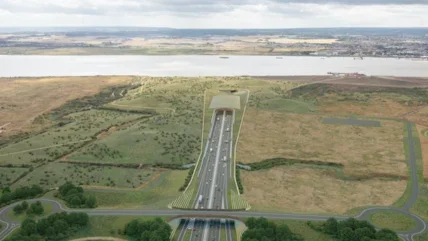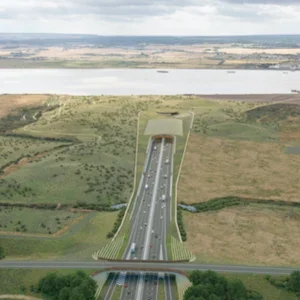
The Lower Thames Crossing will be the first major infrastructure project to use a new scheme to reduce environmental red tape.
Under the government’s Plan for Change the project, which will include the UK’s longest road tunnel, will have one lead environmental body in charge.
The Department for Environment, Food & Rural Affairs (Defra) says the single point of contact for the developer will cut project timelines and costs.
“The new system will end the merry-go-round of developers dealing with multiple, overlapping authorities. Instead, a lead environmental regulator will deliver a single, co-ordinated response. This will cut the time it takes to meet planning permission requirements and approvals for environmental plans,” Defra said.
Natural England will fill the role for the Lower Thames Crossing, working with the Environment Agency and Marine Management Organisation to provide co-ordinated advice. Any challenges that cannot be resolved between the regulators will be passed to Defra’s new Infrastructure Board.
“Infrastructure, housing and nature are not competing interests,” said Natural England chief executive Marian Spain. “Sustainable development and nature recovery must go hand in hand, and urgent action is needed to restore our depleted nature and build desperately needed homes and infrastructure.”
Matt Palmer, Executive Director, Lower Thames Crossing executive director Matt Palmer said the new approach would “help us to move at pace, while ensuring we protect the natural environment and meet our environmental commitments”.
The government will build on insights gained from the Lower Thames Crossing and a series of other pilots to refine the new approach with a view to rolling it out to all major developments.
The Lower Thames Crossing will be a new 23km road crossing connecting Kent and Essex. The twin 4.1km-long tunnels will link the A2 in Kent with the A13 and M25 in Essex.







